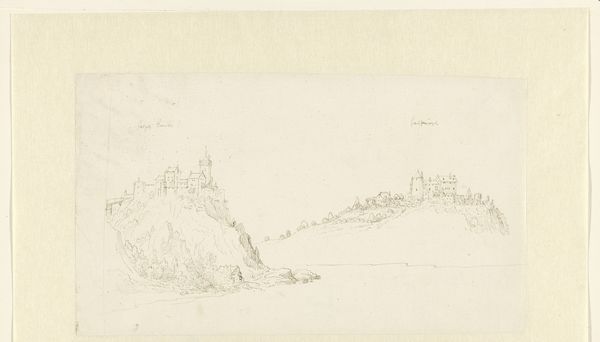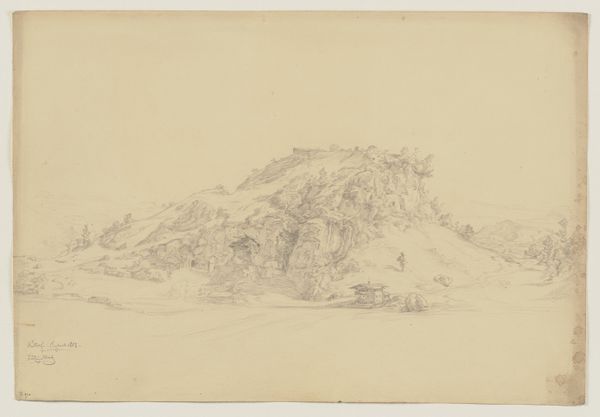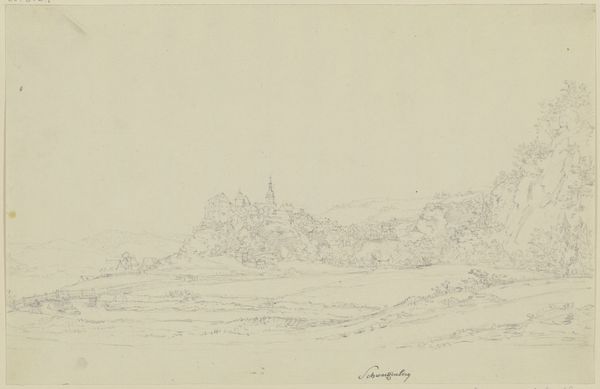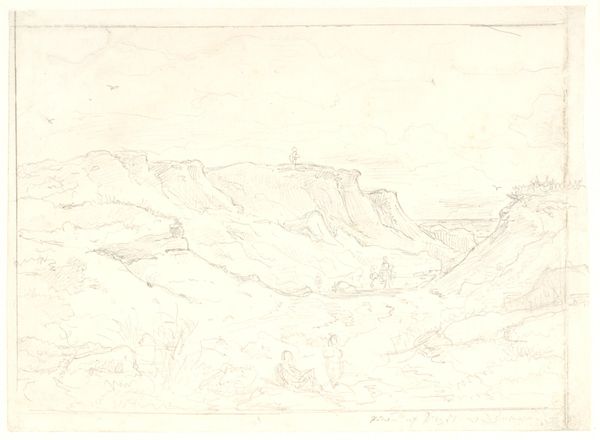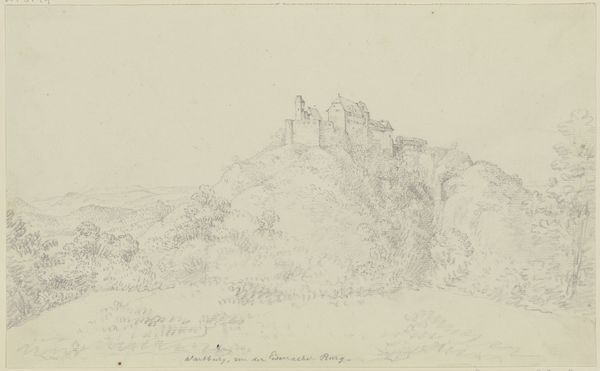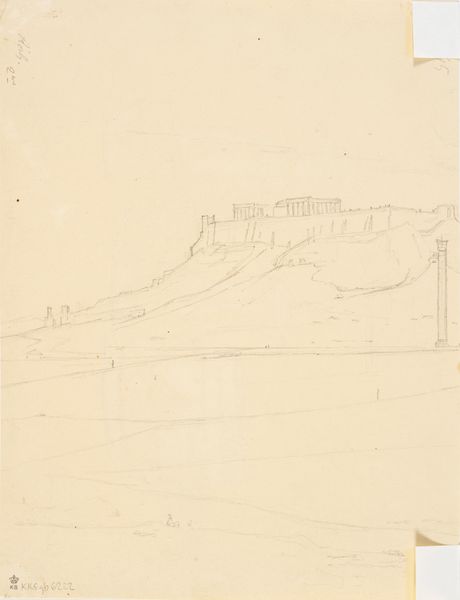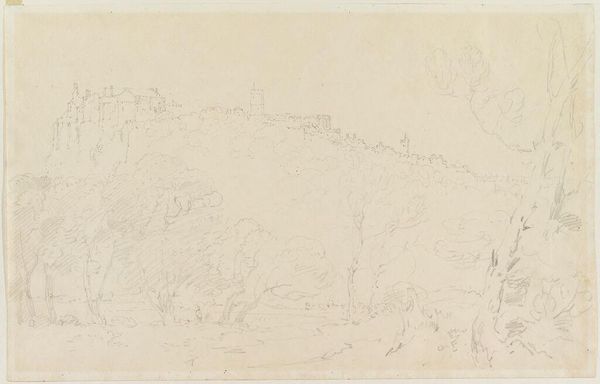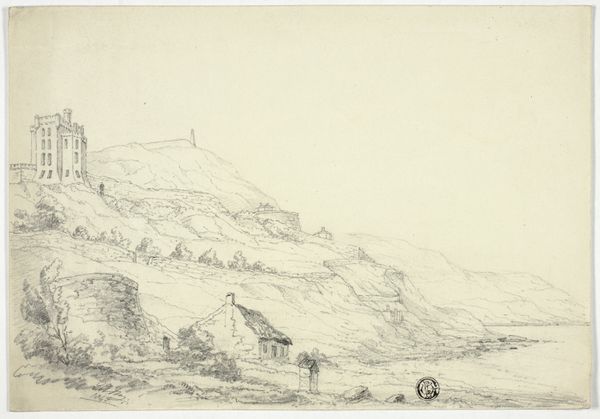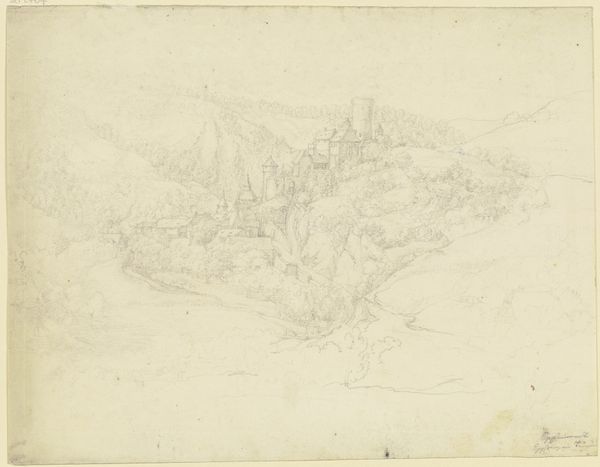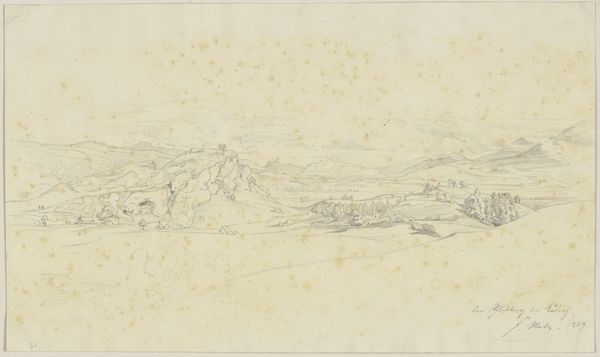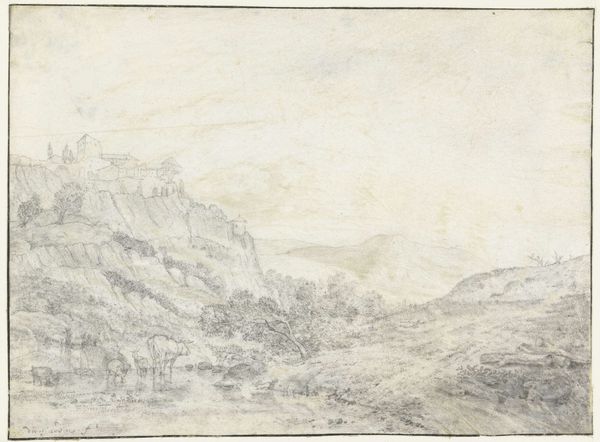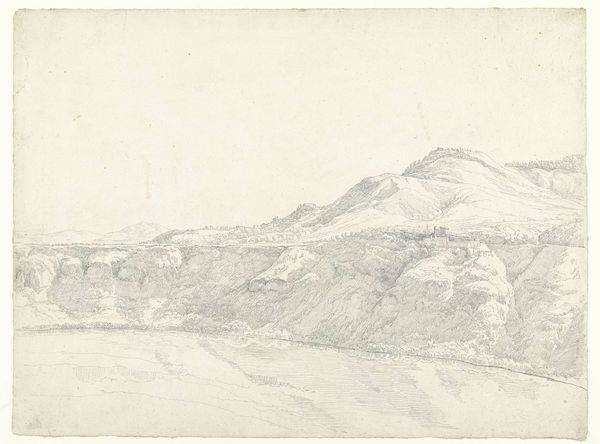
drawing, print, paper, graphite
#
drawing
# print
#
landscape
#
etching
#
paper
#
sketch
#
line
#
graphite
Dimensions: 265 × 214 mm
Copyright: Public Domain
Curator: This graphite drawing on paper, simply titled "Holy Island Castle, Durham," is attributed to Thomas Girtin. What are your initial thoughts on this understated work? Editor: I find it incredibly evocative, even ghostly. The almost skeletal lines barely conjure the castle, yet it speaks volumes. It brings forth feelings of longing, of histories barely visible but still palpable. Curator: I agree. It's important to consider that Holy Island, also known as Lindisfarne, has a deep resonance within British history, holding centuries of layered religious and military significance, specifically regarding the defense against foreign powers and the influence of monastic tradition. How does Girtin subtly reference these factors through iconographic forms? Editor: The placement of the castle is especially interesting – perched atop a natural, steep hill as a beacon for an important coastal region. It strikes me that there is a strong implication of divine mandate present in this imagery – a kingdom defended from invaders, under the grace of God. The ethereal quality reinforces it too, doesn't it? Almost as if this is less a castle, and more an idea. Curator: Precisely. While executed as a sketch, seemingly informal, it represents power, the consolidation of kingdoms, and the Church's firm grounding throughout the British Isles. Its placement reminds us how power depends upon landscape, specifically geographic dominance. Girtin masterfully condenses so many intersectional layers—political, religious, and geographic—with seemingly minimal effort. Editor: And there are suggestions of the rugged coast here too. He manages to capture the unforgiving nature of that island. This contrasts against that implied divine assurance of protection from afar, no? Curator: Most certainly. There is that push and pull, a very material threat set against presumed religious fortitude. Editor: Thinking about its quiet nature and almost sketched affect, it evokes such silent historical significance. What starts as something quite slight soon becomes deeply entrenched. Curator: Thank you. It’s easy to be swept away by first impressions of "Holy Island Castle," but I invite all of our listeners to consider the many ways in which subtle artwork is never slight in the stories it carries and conveys.
Comments
No comments
Be the first to comment and join the conversation on the ultimate creative platform.
